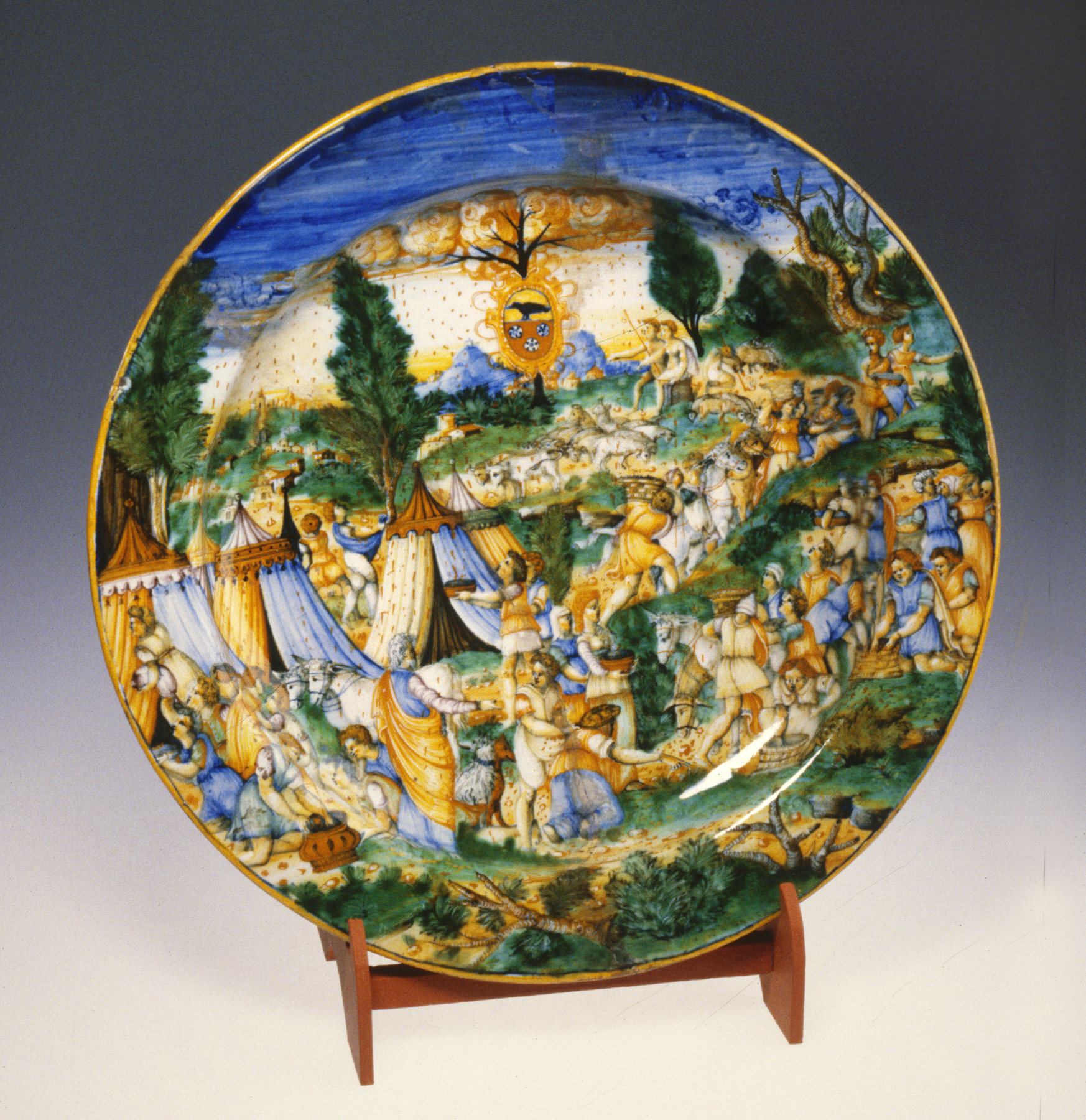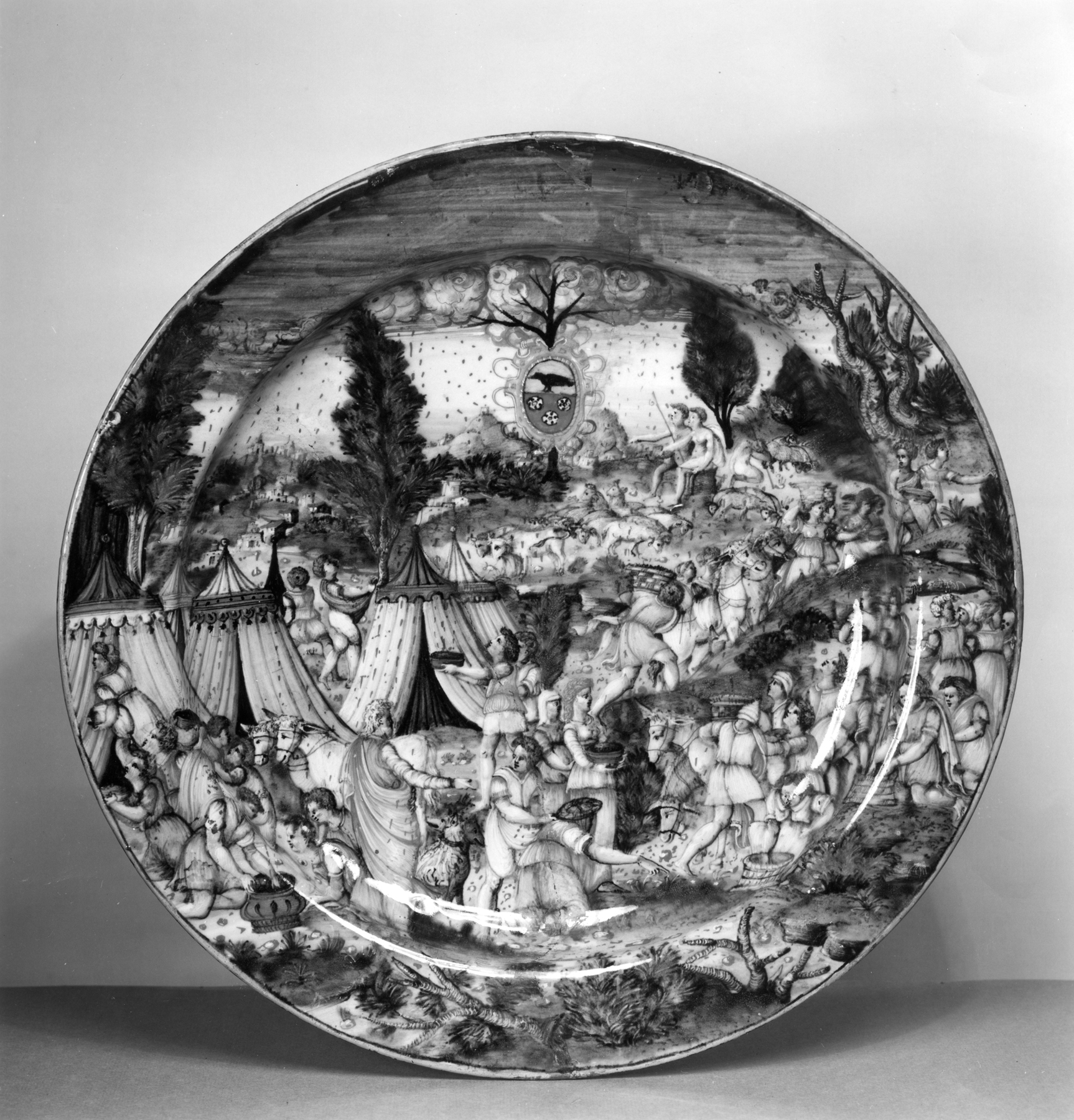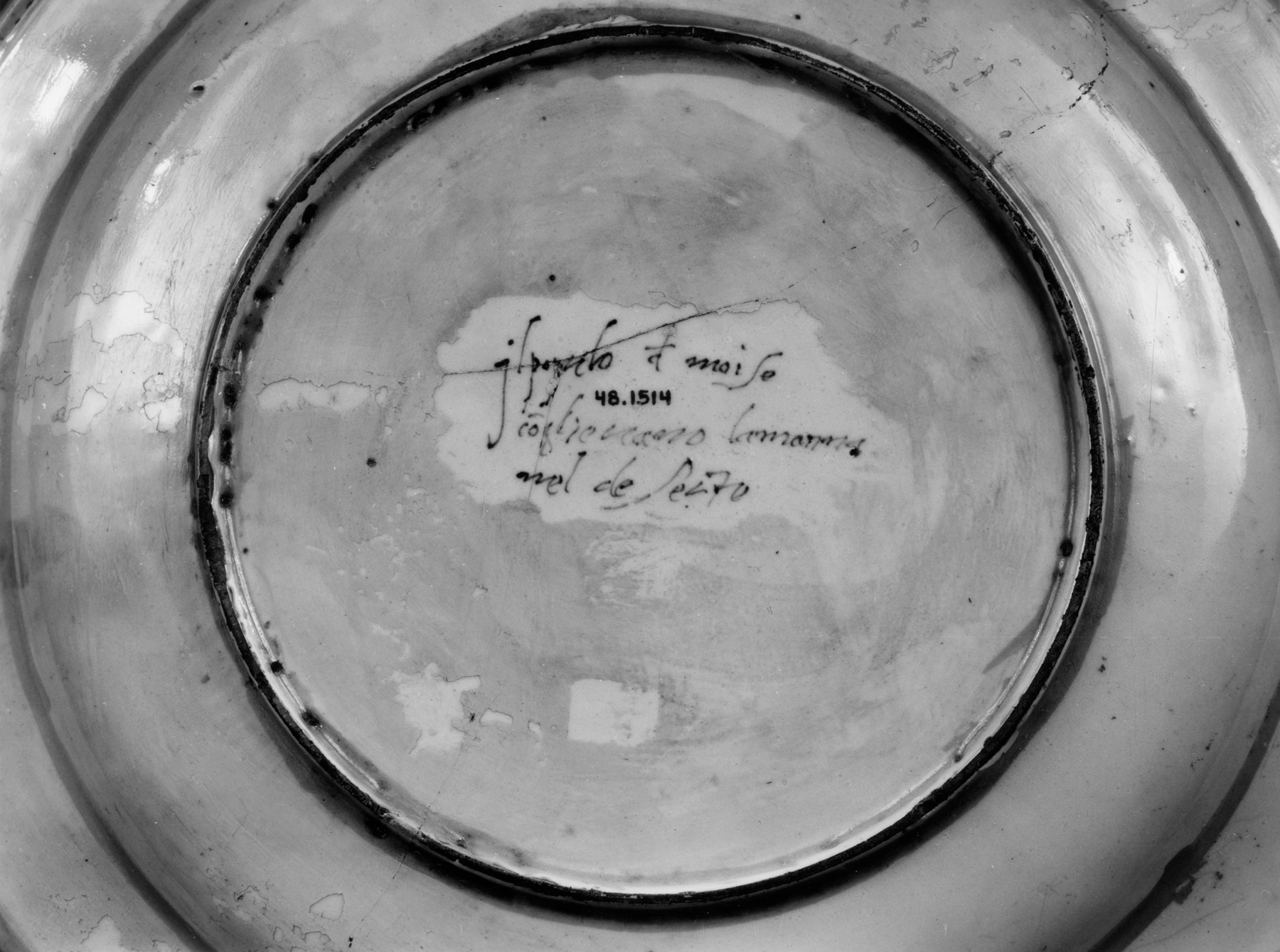Plate with the Gathering of Manna
(Renaissance Europe )
This plate shows the Old Testament (Exodus 16) story of the Israelites gathering the manna that miraculously fell from the sky and saved them from starvation in the desert. This story was popular because it served as a prototype of Christ’s distributing bread to his followers at the Last Supper, and therefore of Communion. In the foreground, Moses stands with his right arm outstretched, while Israelites with baskets and donkeys stand in lines on either side. Scenes depicting crowds of people offered maiolica painters the opportunity to display their mastery of human figures of all ages. The coat of arms in the upper center is unidentified, but the device surely belonged to a nobleman who commissioned the plate as part of a larger set of tableware.
Although maiolica was occasionally painted with biblical subjects, the role of these wares was usually more decorative than spiritual. The back is white stained with green and ornamented with three concentric yellow-ochre circles; in the center, in blue, is the inscription, “Il populo moise / coglie uano la manna / nel deserto.” This plate was likely made in the workshop of Andrea da Negroponte, whose name appears on numerous maiolica wares produced in Castel Durante during the second half of the sixteenth century. To see other pieces made by this artist, click on the name in the creator field. For information on “maiolica," see 48.1336.Inscription
Provenance
Provenance (from the French provenir, 'to come from/forth') is the chronology of the ownership, custody, or location of a historical object. Learn more about provenance at the Walters.
Guidi Family, Faenza; Famille Guidi de Faenza Sale, Galerie Sangiorgi, Rome, April 21-27, 1902, n. 39; Henry Walters, Baltimore, 1902, by purchase; Walters Art Museum, 1931, by bequest.
Geographies
Italy, Urbania (Casteldurante) (Place of Origin)
Measurements
2 3/16 x 16 9/16 in. (5.5 x 42 cm)
Credit Line
Acquired by Henry Walters, 1902
Location in Museum
Accession Number
In libraries, galleries, museums, and archives, an accession number is a unique identifier assigned to each object in the collection.
In libraries, galleries, museums, and archives, an accession number is a unique identifier assigned to each object in the collection.
48.1514






